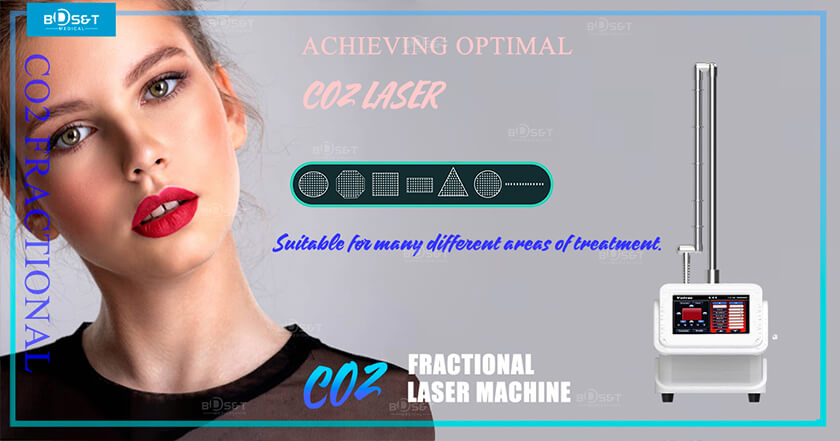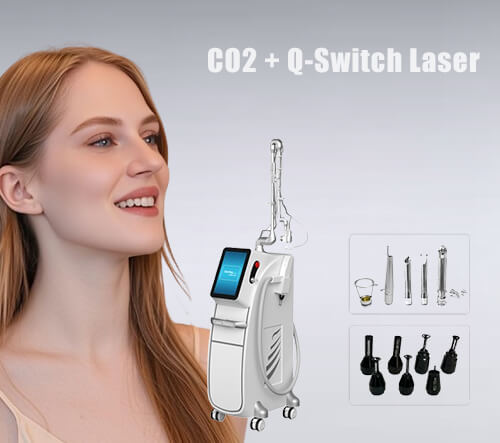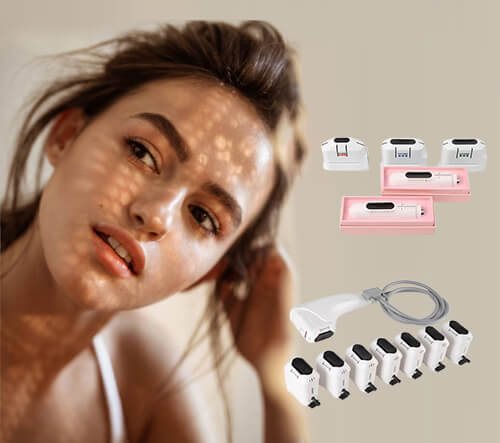What is the theory of operation of the fractional co2 laser?
Target tissue skin darkens and ages before treatment. Use laser to scan and treat target tissue.
Heat can be transmitted from the superficial skin to the dermis. Traumatic holes and holes between tissue
do normal to produce thermal bridges initiate the skin trauma repair mechanism (inflammatory stage, pro phase
liferativa, remodeling stage). Produce many new collagens, for the reconstruction of framework structures
leather and facial contour sculpture. Wrinkles disappear, delicate skin texture, acne calming effect
CO2 (carbon dioxide) laser resurfacing uses specific light rays to remove the top layer of skin.
This type of fractional CO2 laser treatment can:
Skin rejuvenation: rough skin, thick pores, dark skin, slight damage, etc.
Wrinkle removal: crow's feet, headlines, Sichuan characters, decree lines, etc.
Pigment removal: pigmented nevi, epidermal pigmentation.
Epidermis cut: all types of warts.
Scar repair: acne scar, hypertrophic scar, burn scar, sunken scar, etc.

How does CO2 laser resurfacing work?
CO2 laser resurfacing uses pulses of laser light. These rays penetrate the surface of the skin, where the water from the skin cells absorbs them. When this happens, the epidermis, or top layer of skin, vaporizes.
The dermis, or middle layer, is heated, stimulating the growth of new collagen fibers. As the area Healthy, new, firmer and smoother skin replaces the old layers.
During CO2 laser resurfacing, a cosmetic surgeon or dermatologist can target specific areas of your skin precisely, so the treatment will not affect the rest of the skin nearby.

What can you do during your CO2 laser treatment?
Before treatment
Start using sun protection regularly. Avoid tanning beds and sun exposure, which increase the risk of post-inflammatory hyperpigmentation (PIH).
Clean your face and leave it without makeup before going to your appointment.
During treatment
Your specialist will ask you to put on a comfortable patient gown, wear eye protection, and wear medical anesthetic ments in the treatment area.
After about 30 minutes, the treatment can begin.
After treatment
Remove the dressings after 24 hours.
Cleanse treated skin twice daily or as directed.
Keep it moist with a thick layer of ointment throughout the day to prevent scabbing until that the skin closes.
To relieve pain, you can apply ice packs during the day or take acetaminophen.
Sleep with your head up for the first few nights after your session. This prevents swelling, suppuration and strong pressure on the treated area.
Once the skin is completely healed, you can begin applying a gentle sunscreen formula.
Avoid alcohol and cigarettes until the skin has completely closed.
Follow your dermatologist's aftercare instructions meticulously to avoid complications and speed your recovery.

 Español
Español


